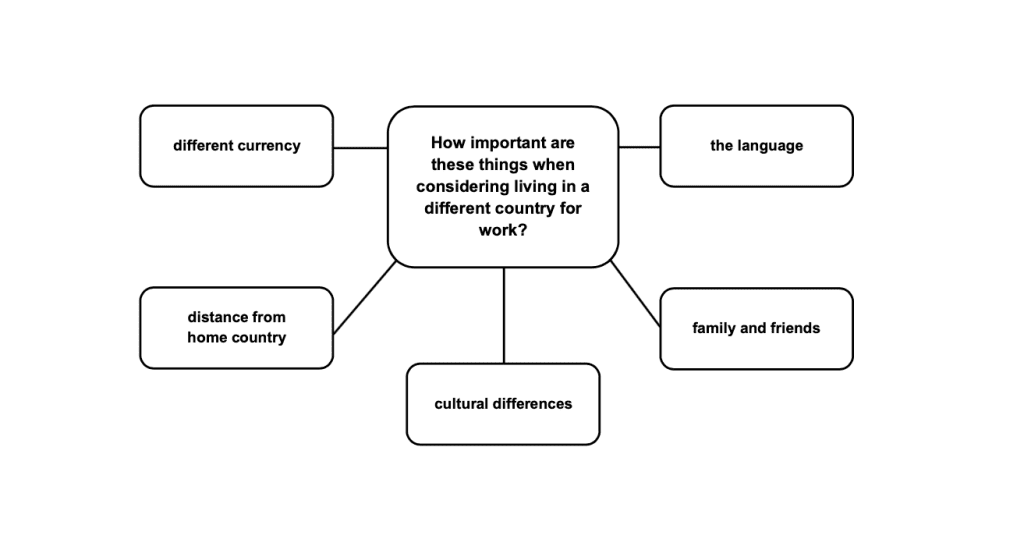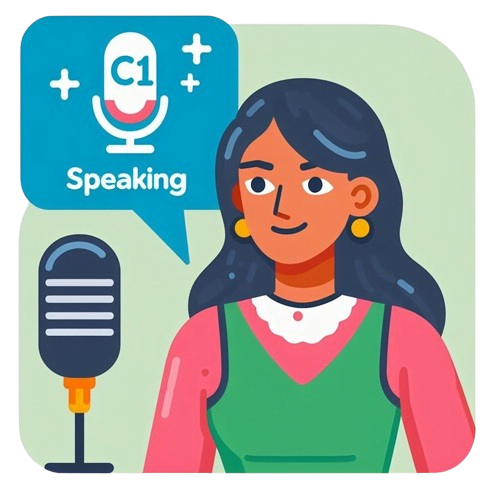Cambridge C1 (CAE): Guide to Speaking Part 3
What you will find in this guide:
Speaking Part 3
In Cambridge C1 (CAE) speaking Part 3, You and the other candidate(s) discuss and complete a decision-making task. You have 15 seconds to read the task first, then 2 minutes to discuss and 1 minute to make a decision together. The interlocutor will give you spoken instructions and provide you with written prompts so you discuss a topic with your partner(s). You are expected to discuss some or all of the prompts in relation to a question, expressing and justifying your opinions. You are then asked another question which will engage you in negotiating towards a decision related to the written prompts that you have previously discussed.
Sample Question
Examiner's comments
The Rubric
Potential Challenges in Speaking Part 3
As I have taught exam preparation for over a decade and helped hundreds of candidates achieve their desired scores, I see students struggle with very simple but common challenges in this part. These challenges are that simple that often go unnoticed, which makes them very common. So, I want to provide solutions to ensure these challenges won’t pose a problem for you.
Here are some potential challenges the CAE (Cambridge English: Advanced) speaking test.
Initiation of Conversation: The CAE speaking test is an exchange, not a monologue. Candidates are expected to initiate conversation as part of the assessment rubric. However, many candidates, especially those who are shy, may forget to do this or may not even be aware of this requirement. It’s important to remember that active participation and engagement are key to a successful performance.
Negotiation Toward an Outcome: Another key aspect of the CAE speaking test is the ability to negotiate towards a final decision. This involves listening to others, expressing your own ideas, and finding common ground. Many candidates overlook this aspect, either because they forget or because they’re not aware of it. However, demonstrating negotiation skills can significantly enhance your score.
Explaining Ideas in Depth: Candidates are expected to explain their ideas in depth and provide convincing reasons for their views. It’s not enough to simply agree or disagree with a statement; you need to justify your stance. Many candidates fail to pay attention to this, resulting in responses that lack depth and persuasiveness.
Guide to Part 3
Part 3, the decision making task, tests your ability to use the language of negotiation and collaboration. However, you are not penalized if you fail to reach a negotiated decision. There is no right or wrong answer to the task. Therefore, you must show that you can negotiate fluently, accurately, and demonstrate initiation, development, and conclusion and reaching an agreement in your exchange with the partner(s) you are speaking with. So, please do the following:
- It’s a good idea for you to start the discussion by giving your opinion about an item in the prompt. This will give you the advantage to start the exchange (conversation) and lead the discussion. Ideally, you would like to be noticed by being the dominant contributor in that discussion.
- You must address the written prompt in this task. So, make sure your exchange with your partner is centered around the written prompt.
- When addressing the prompts, make sure to justify your reasons as to why you think something is important or not important. Give specific reasons for your opinion and avoid giving generic reasons such as “learning the language is important because you need to communicate”. Instead of a generic reason, paint a dramatic picture about what the consequences would be if you couldn’t speak the language.
- Make sure to use conversation fillers to give yourself time to think, e.g. ‘Well’, ‘now’, ‘let me see’. However, do not over-use these as this will limit your range of language.
- Don’t do all the talking! You should neither do all the talking, nor should you be passive in the discussion. There must be a balance. So, make use of strategies which invite your partner to contribute to the discussion but do not give the impression that you are relying on your partner to do all the work.
- If you didn’t start the conversation, you must show initiation of conversation, the development of it, and that you can reach a conclusion. So, make sure to ask questions, agree or disagree with your partner, or echo what your partner has said, and work toward coming up with a final decision.
- Use appropriate linkers and cohesive devices to connect your ideas.
- Speak naturally at normal pace. Do not speak fast and make sure you are not speaking slowly. Sometimes, candidate get stressed out and speak faster or slower than they usually do as a result of their stress. Make sure this wouldn’t happen to you.
- Do not use memorized phrases. Rehearsed speeches should be avoided as these are easily spotted and they might be inappropriate for the questions asked.
- Try and use a variety of appropriate tenses, structures and vocabulary in this part of the test.
- Use the following phrases:
Useful Vocabulary for Speaking Part 3
Starting a discussion
- Shall I start? / Yeah, go on.
- Shall I go first? / Of course, go ahead.
- Is it okay if I start? / Sure, no problem.
- Would you like to go first? / Yes, why not?
Expressing opinions
- I believe/think that…
- In my opinion,…
- The way I see it,…
- If you ask me,…
- I would say that…
- It seems to me that…
- In my view…
- As far as I’m concerned,…
Asking for your someone’s opinion
- statement, don’t you think/agree?
- statement, wouldn’t you say so?
- statement , wouldn’t you agree?
- statement, right?
- Do you think…?
- Do you believe that…?
- What do you think about…?
- How about…?
- What about…?
- What’s your take on…?
Agreeing
- I (totally) agree with you.
- You’re dead right.
- That’s (absolutely) true.
- You’re (absolutely) right.
- That’s a great idea.
- I couldn’t agree more.
- Yes, I see what you mean.
- I see it that way, too.
- Yes, of course.
- I think so, too.
Disagreeing
- I’m afraid I don’t see it the same way.
- I’m sorry but I have to disagree.
- You may be right, but I have a different view.
- That might be true, but I’m not sure I agree with you.
- I’m sorry, but I don’t agree.
Moving on to a different the subject
- As for + one of the options
- As to + one of the options
- In relation to + one of the options
- As regards + one of the options
- Regarding the question of the task,
- With regard to + paraphrased question
Concluding the discussion
- I believe we have an agreement, don’t we?
- So, do we have an agreement?
- Shall we stick to…?
- Shall we agree on..?
Use the Guide
Use the guide to practice and speak about the following prompt.

Speaking Checklist
Use a checklist to track your performance. Download the checklist here and evaluate your speaking.
How was your experience?
Describe your experience taking the part 3 speaking in the comment section below, and if you would like to read my guide on C1 speaking part 4, click here.






